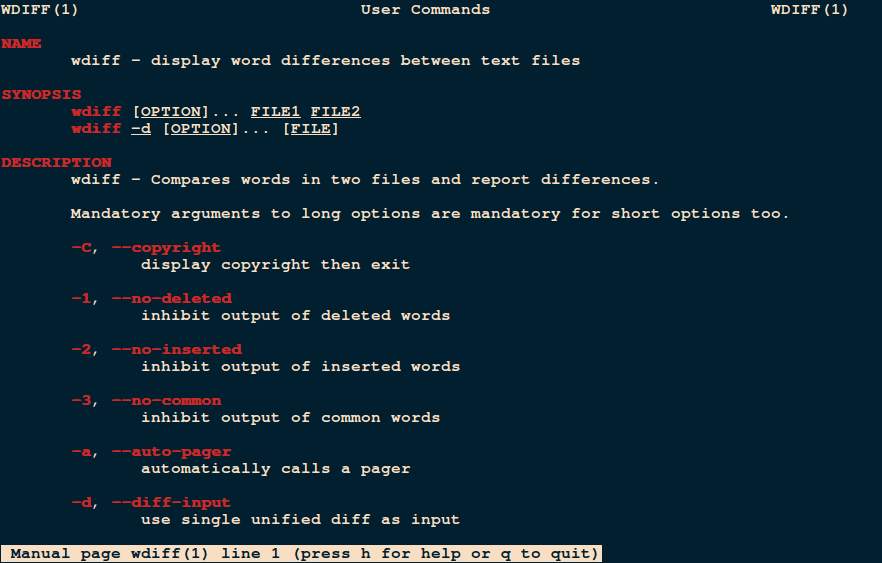
If you’d prefer a more compact side by side summary of the file differences, use the -suppress-common-lines option. : A line that has been added to the second file that is not in the first file.|: A line that has been changed in the second file.There are indicator characters alongside those lines in alpha2 that have been changed, deleted or added. The lines from each file are displayed, side by side. The first file on the command line, alpha1, is shown on the left and the second line on the command line, alpha2, is shown on the right. Here we have told diff to produce a side by side display and to limit the output to 70 columns. This avoids ugly wrap-around lines that make the output difficult to read. It is often convenient to use the -W (width) option with the side by side view, to limit the number of columns that are displayed. The -y (side by side) option uses a different layout to describe the file differences. One thing to watch out for is that with two identical files the -q (brief) option completely clams up and doesn’t report anything at all. You can use the -q (brief) option to get an equally terse statement about two files being different. If you all you want to know is whether two files are the same, use the -s (report identical files) option. These contain the words Quirk, Strange, and Charm. The label is interpreted as “at line 26 in the first file, add lines 26 to 28 from the second file.” We are shown the three lines in alpha2 that need to be added to alpha1. In this example, the range is from line 26 to line 28. Two-line numbers separated by a comma represents a range of line numbers. This change refers to three extra lines that have been added to alpha2. The fourth difference is labeled 26a26,28. The label 21d20 is deciphered as “line 21 needs to be deleted from the first file to make both files synchronize from line 20 onwards.” The < Uniform line shows us the content of the line which needs to be deleted from alpha1. The third change refers to a line that has been deleted from alpha2.

Applying the same logic, this tells us that line 12 in alpha1 contains the word Lima, but line 12 of alpha2 contains the word Linux. The next change is indicated by the 12c12. To summarise then, we need to replace Delta with Dave on line four in alpha1, to make that line match in both files.

The line Dave tells us that the word Dave is the content of line four in alpha2. Lines that begin with refer to the second file, alpha2. This is the first difference between the two files that diff found. The 4c4 in our example tell us that line four of alpha1 must be changed to match line four of alpha2. a: Extra content must be added to the first file to make it match the second file.d: The line in the first file must be deleted to match the second file.

BEST DIFF TOOL FOR UBUNUT PATCH
The diff command was designed to find differences between source code files and to produce an output that could be read and acted upon by other programs, such as the patch command. If you keep that in mind you’ll find it easier to understand the output from diff. The diff command compares two files and produces a list of the differences between the two. To be more accurate, it produces a list of the changes that would need to be made to the first file, to make it match the second file.


 0 kommentar(er)
0 kommentar(er)
